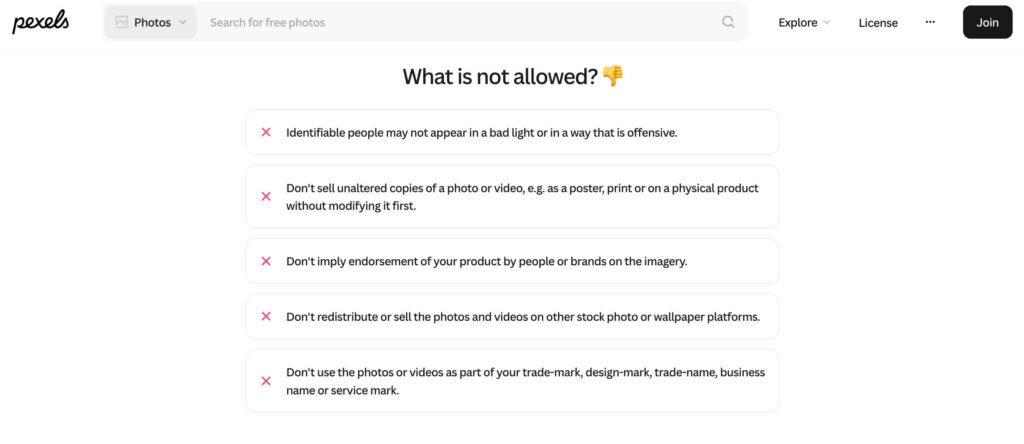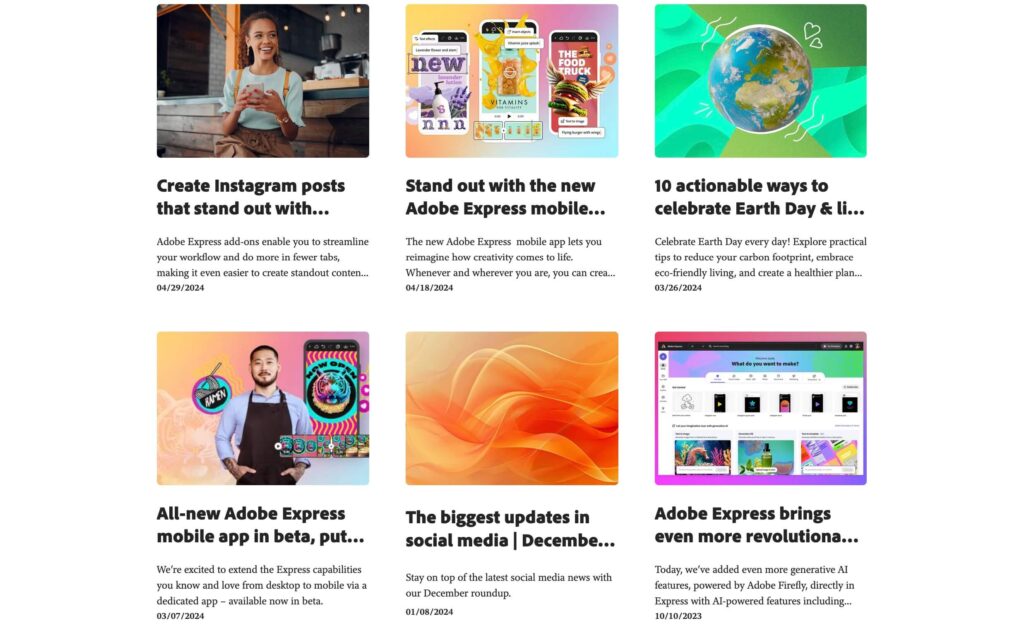The Ultimate Guide to Using Stock Imagery in Marketing
Do you use stock imagery in your brand’s designs? You’re not alone—most marketers do! It’s not just about filling a gap when quality photos are not available; it’s about speed, affordability, and convenience, too. Stock imagery has become a go-to solution for businesses looking to create standout visuals without breaking the bank or missing deadlines.

Gone are the days when stock photos meant photos of clichéd handshakes and awkward staged meetings. With the growing number of stock libraries, you can now find visuals for every need—lifestyle shots, bold illustrations, even niche-specific graphics. The trick? Knowing when and where to use stock imagery, and how to make it your own.
So, if you use stock photos, videos, and other elements and want to know how to make the most of them to enhance your brand’s visual marketing, you are in the right place. We’ll dive into the do’s and don’ts, share practical tips to leverage stock imagery effectively, and spark some creative inspiration. Ready to elevate your visuals? Let’s get started!
Stock Imagery & Its Role in Marketing: An Overview

Before we talk about a few tips to effectively incorporate stock imagery in your marketing workflow, let’s address some of the most common questions.
What are stock photos?
In simple words, these are photos created and licensed for various purposes. Where you can use stock photos and what levels of manipulation are allowed on each depend on the specific type of license and the source of these stock photos.
What are the benefits of stock photos?
So, why do brands & marketers use stock imagery?
- Not all brands and marketers have access to high-end photography equipment for photoshoots or the budgets to hire professional photographers. The highest quality stock photos turn out to be cost-effective alternatives in such cases.
- But if you do manage to capture quality photos, the post-processing that comes with it can be tedious. So, when you are on a time crunch, stock imagery feels like a more convenient option.
- Let’s also talk about variety. Brands need not just any visuals but visuals where the subject, scenes, and moods are all aligned with their products and their audience. Stock photo libraries make it easy to find similar photos with diverse subjects and settings.
Are stock images free to use everywhere?
If you think you can grab images off of Google Image search results page, think again. Why even when you use stock imagery from stock photo sites like Shutterstock and Adobe Stock, you need to be double sure about the terms of the licenses for each image.
So, can you use stock images for free? The answer to this question lies in understanding the common types of licenses for images. Here are some of the most common types of licenses you might come across.
- Public Domain
- Creative Commons
- Royalty Free
- Rights Managed
Of these, images in the public domain are the most hassle-free to work with since they are free to use (almost entirely) and do not need attributions. Besides, they do not carry any legal strings and can therefore be suitable for use in marketing. A few popular sites to find stock imagery in the public domain include Pexels, Unsplash, Pixabay, and Little Visuals.
Do stock photos affect SEO?
In the ideal sense, stock photography does not affect SEO directly. However, the real problem arises when you violate licenses, use clichéd images, or poor quality options.
So, how can you avoid SEO issues when using stock imagery?
- Use niche stock sites when you can.
- Avoid those overused stock images you see almost everywhere and choose unique ones that resonate with your brand’s visual style.
- Compress your images when uploading them to your website.
- Pay attention to image SEO strategies, including file naming and other steps.
- Double-check image licensing terms from the source where you grab your stock imagery.
Where to use stock photos in marketing
So, now let’s talk about a few applications where using stock imagery (with custom updates) works fine.
- Marketing emails where visuals simply support the text.
- Blogs where images are essential to create hierarchy and segment long text portions into meaningful sections.
- Presentations and reports where relevant stock photos can help reduce the visual strain caused by too much text.
- In addition to all these, stock images can be particularly handy when used in social media posts. As long as you tweak the message and copy to ensure clear delivery, stock photos get the job done. Take a look at this example from KFC. Filler posts like these, which do not directly promote but merely try to start conversations, can often include stock photos.
Where not to use stock photos in marketing
Despite the convenience and the benefits that stock imagery brings, there are some places where it might not be the best choice.
- Core branding designs like logos and mascots.
- Packaging design where stock photos might make your product appear too similar to the rest in the industry.
- Campaigns celebrating company milestones – authentic brand photos help capture the essence of the celebration in such cases.
- Product listings – users looking to place an order will not exactly feel confident about your brand if they come across generic stock photos on product pages.
- Additionally, it’s best to avoid stock imagery altogether in the marketing designs for luxury brands targeting niche customers looking for exclusivity.
With the nitty gritty sorted, let’s get to the crucial topic – best practices when using stock imagery in marketing.
Stock Imagery: Tips, Tricks & Best Practices
Choose relevant images that support your message
Relevance isn’t a luxury when it comes to visuals in marketing–it’s a must-have! So, choose stock imagery that effectively captures the message you want to communicate. Otherwise, the visual ends up confusing the audience or, even worse, distracting them from the core message.
Imagine seeing the image of a man on a treadmill in a fitness blog focusing particularly on weight training. Or perhaps the cover image of a blog is a stock photo of someone holding a protein shake, but the blog is actually about weight loss. While the images here might seem to fit superficially, the deeper connection and relevance and missing. These are the kinds of gaps you want to avoid when choosing stock imagery.
Steer clear of overused stock imagery
Let’s start with an example. Both the images here are stock photos for “business meeting”; but which of them looks fresh? The second one, right?


The first one looks staged, whereas the second one looks more authentic. Similar to the example here, sift through the endless options on stock libraries to find unique and fresh stock images rather than those that you have seen too often.
City skylines, a workstation with a single computer that appears too clean to be true, a big happy family smiling at the camera – come on! You can do better than that! You do not want people to consider your brand to be as banal as these images, do you?
Blend stock imagery with brand elements
Treat stock imagery as a blank canvas and add your brand elements to create something wholesome out of it.
For instance, the post here from HubSpot uses stock elements. But the brand color, their signature visual style consistent across the slides as well as with the other posts on their page, make you look at it as a HubSpot design rather than a stock image. Now that’s the kind of customization we’re talking about. Use your brand colors, signature fonts, anything that screams you!
Similarly, find the sweet spot – use stock imagery but do not let your brand elements get lost in the crowd!
Do not rely on stock assets alone
Stock assets are good to have, no doubt. But they should not be the only kinds of visuals representing your brand across all channels. You need a good mix of custom graphics and stock assets to stay authentic while also elevating your brand’s visual appeal.
All the big brand examples we gave you so far are proof that stock visuals work when used moderately. As you know, these brands use custom graphics, bespoke typefaces and unique illustrations on packaging, website design, and other places. While the stock imagery helps fill the gaps, the foundation is laid by those custom graphics that the brands use.
So, even if you use stock imagery for a few applications, for others, mix in your own visuals—say, a team photo or a product shot—to add authenticity and depth.
Studies show that stock assets are the worst performers when it comes to visuals in marketing. This isn’t to say stock imagery is useless. However, when it’s the sole star in the show, it can fall flat. It can fail to make that personal connection with your audience.
Take Adobe, for instance; the snapshot below shows you what the Adobe Express Blog looks like. Notice the beautiful balance between custom graphics and stock assets on the blog covers.
Taking cues from brands like these, if you need a dependable design team that can create custom graphics for all your touchpoints, get KIMP!
Sync stock imagery with your brand tone of voice
Take a look at the video below. It uses plenty of stock assets, but overall, the video feels engaging. Another notable quality here is the unique and witty tone. From the copy to the voiceover and transitions, everything feels fun and friendly, which is exactly the tone that Semrush is known for across diverse social media channels.
That’s how your videos and graphics involving stock imagery should be. The stock elements should simply add to the visual aspect, but how you bring all these elements together should align with your brand’s unique tone of voice. The chosen stock elements should not overpower your brand voice and identity or make it look inauthentic and impersonal.
In other words, the overall design in the video or static should sound like your brand. Because every interaction shapes your customers’ perception of your brand.
Evaluate the emotional depth
Now that there is more clarity about licensing of images and plenty of stock sites to sift through, do not settle for less. Choose images that communicate strong emotions. They are the ones that resonate with your customers. They are the ones that seamlessly work with your marketing copy to evoke all the right emotions. After all, when it comes to marketing graphics, emotional depth is a critical component.
While stock images with inanimate objects often suffice, photos with actual people and relatable, realistic lifestyle scenes sit better in marketing applications. Another handy trick is to choose stock imagery where the subject resembles your ideal customer persona. When your target customers see visuals that feel like “them” they are more likely to connect with it and engage with your brand.
Final Take: Mastering Stock Imagery for Your Brand
To sum it up, stock imagery can be a visual powerhouse. Stock images help you quickly enhance the visual appeal of any marketing design. However, you cannot simply add a stock photo to your ad and expect it to bring results. Remember that your competitors also have access to the same stock libraries as you. So, you do not want your ad to end up looking like just another image on the internet.
From ensuring relevance to syncing with your brand’s tone, infusing brand colors and fonts, tapping into emotional depth, and balancing it with original flair, the magic happens when you leverage stock imagery with intention.
So, how can you add a creative flair to the stock assets you choose? If you do not have the time or design expertise to make that happen, why not leave it to the pros? With an unlimited design subscription like KIMP, you can customize the chosen stock assets to your liking or even create custom illustrations and brand graphics from scratch.
Ready to take your brand visuals to the next level? Time to sign up for a KIMP subscription.
Register now and enjoy your free 7-day trial!


